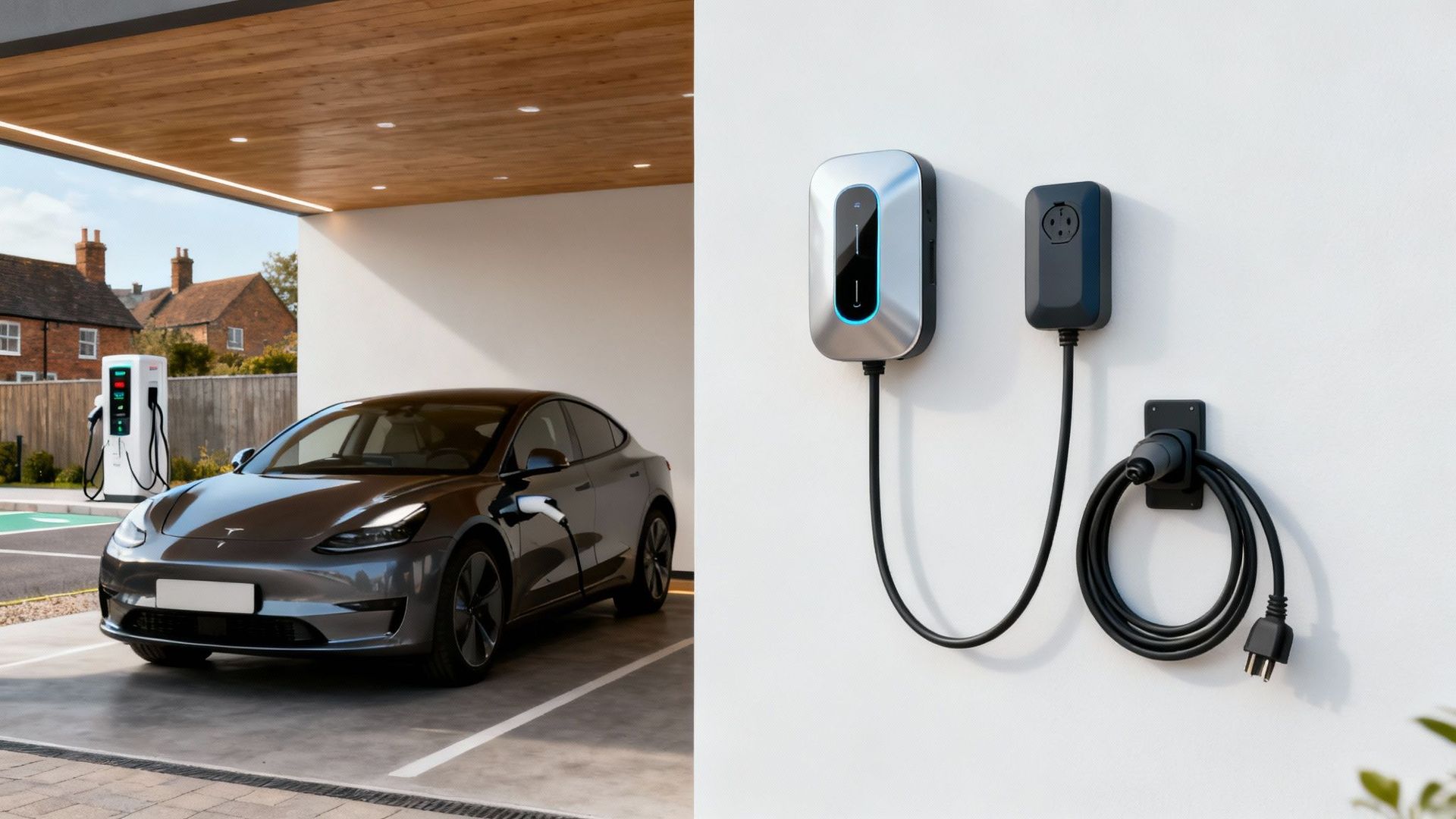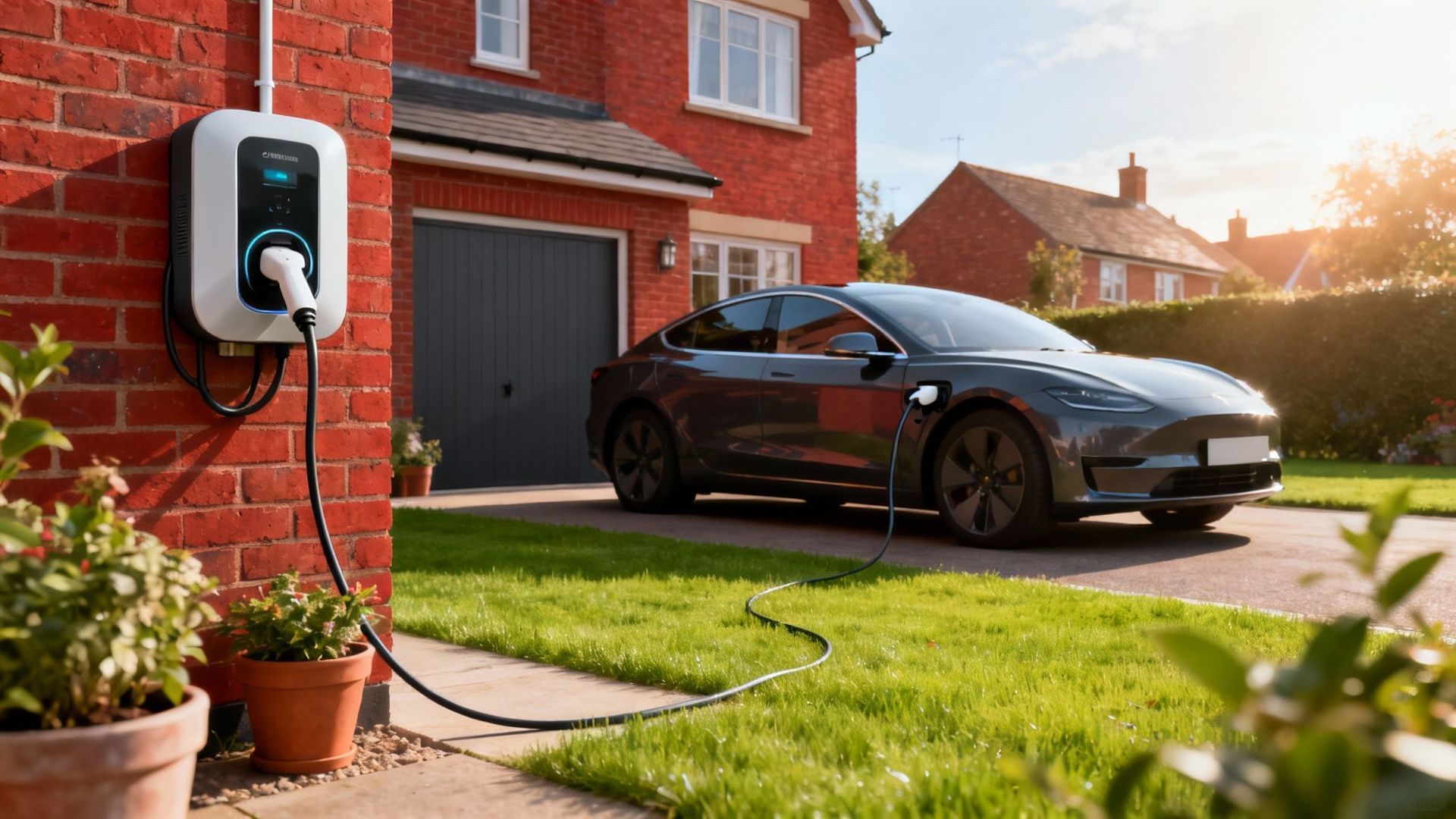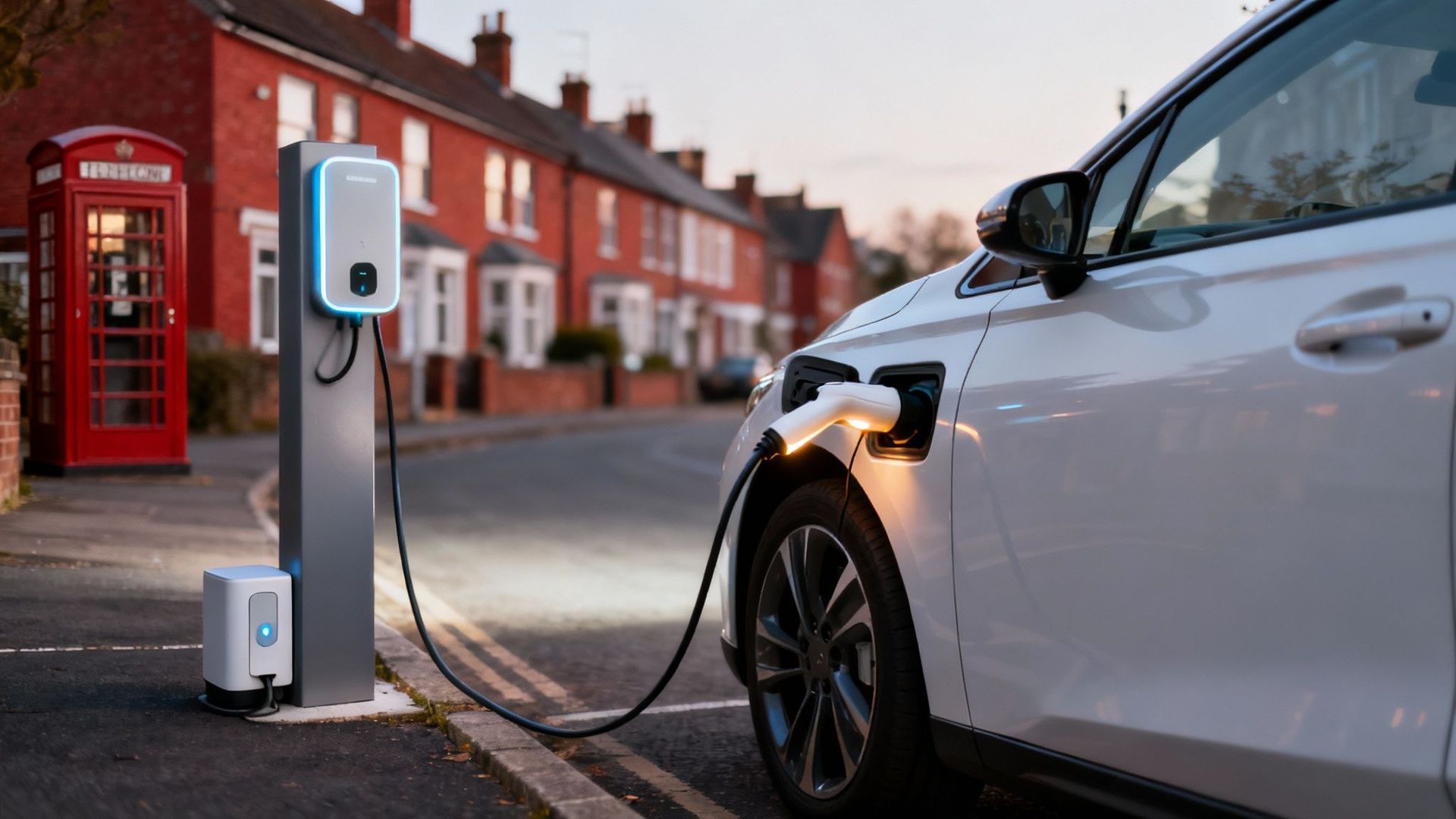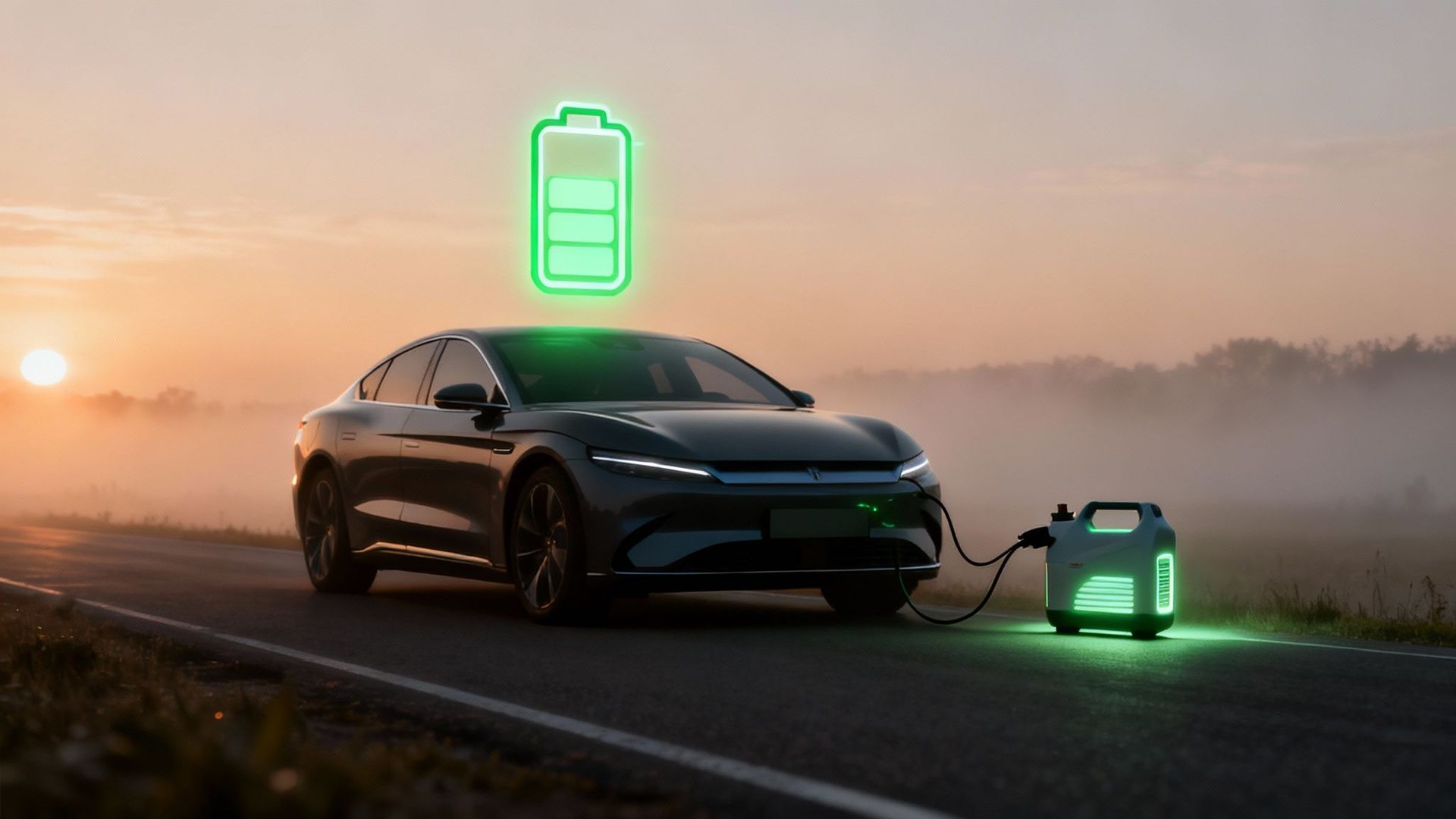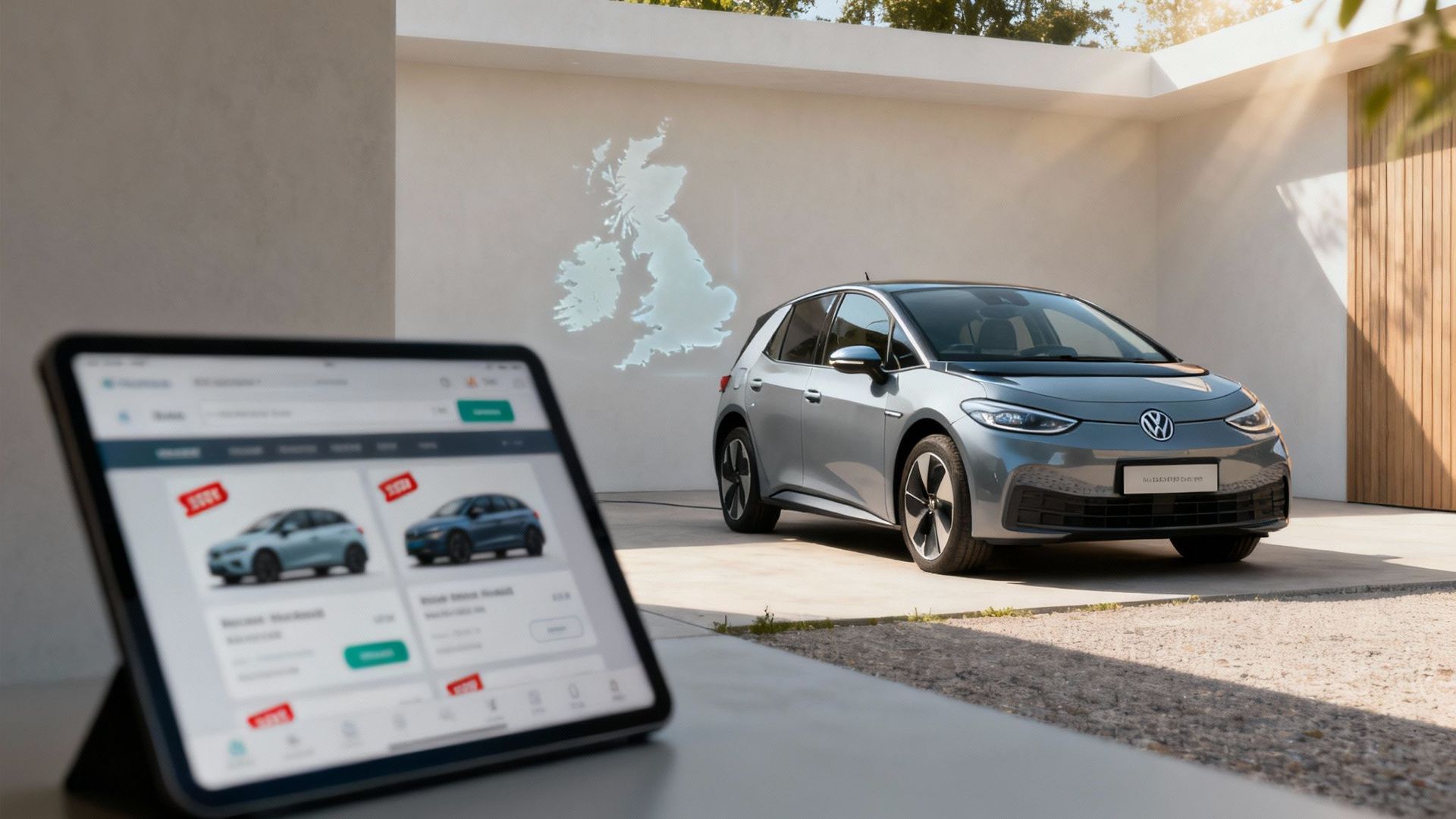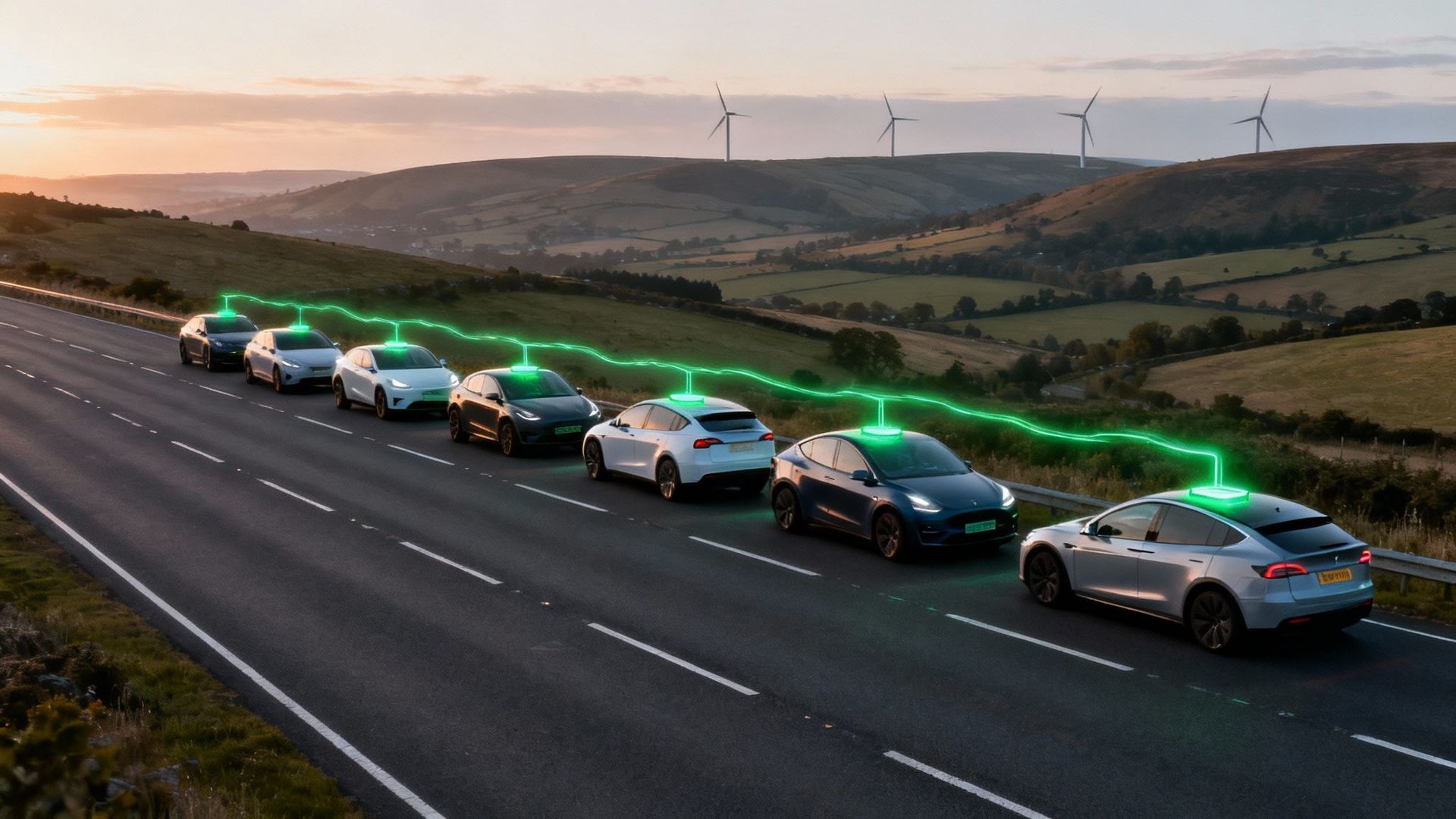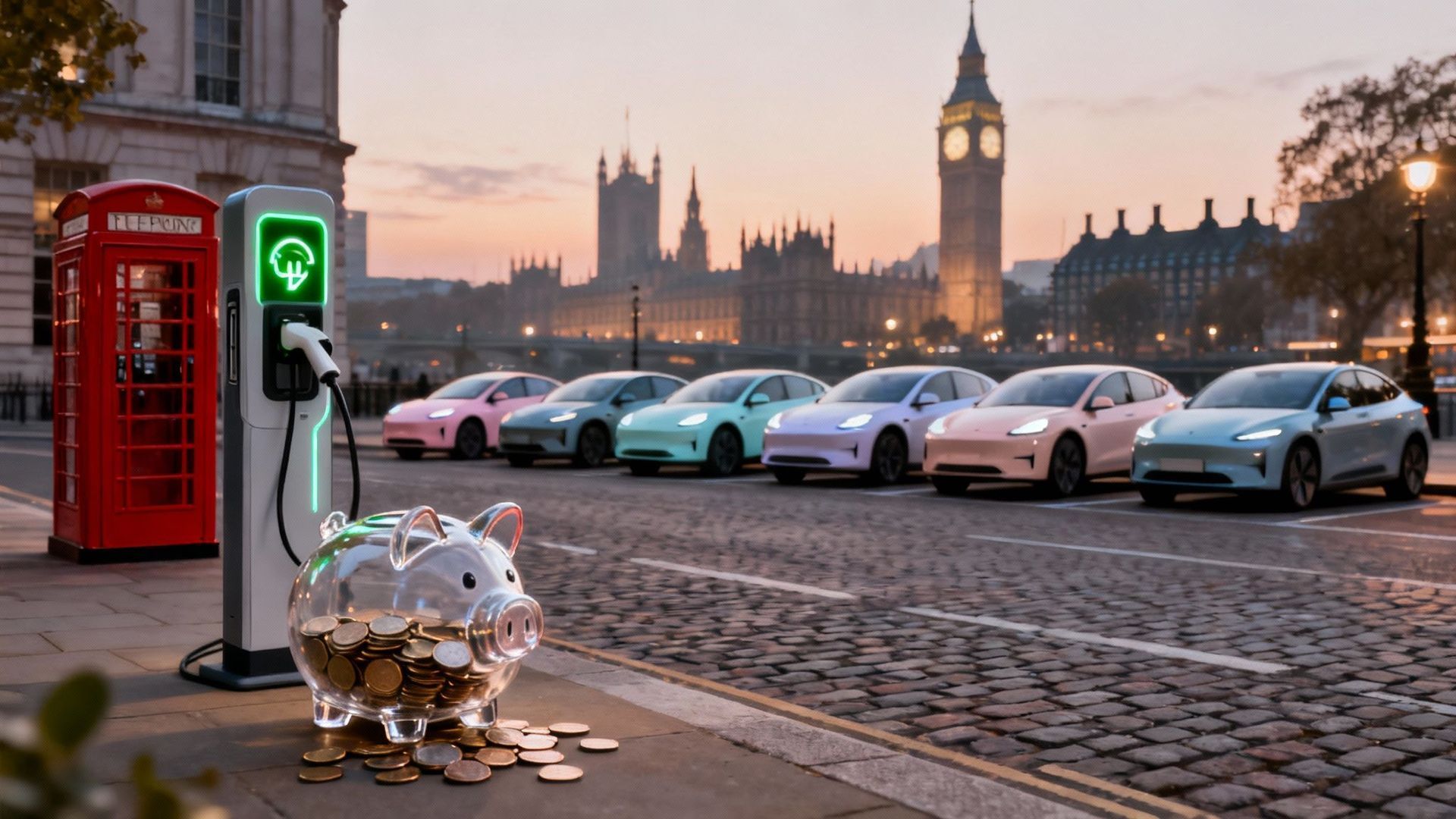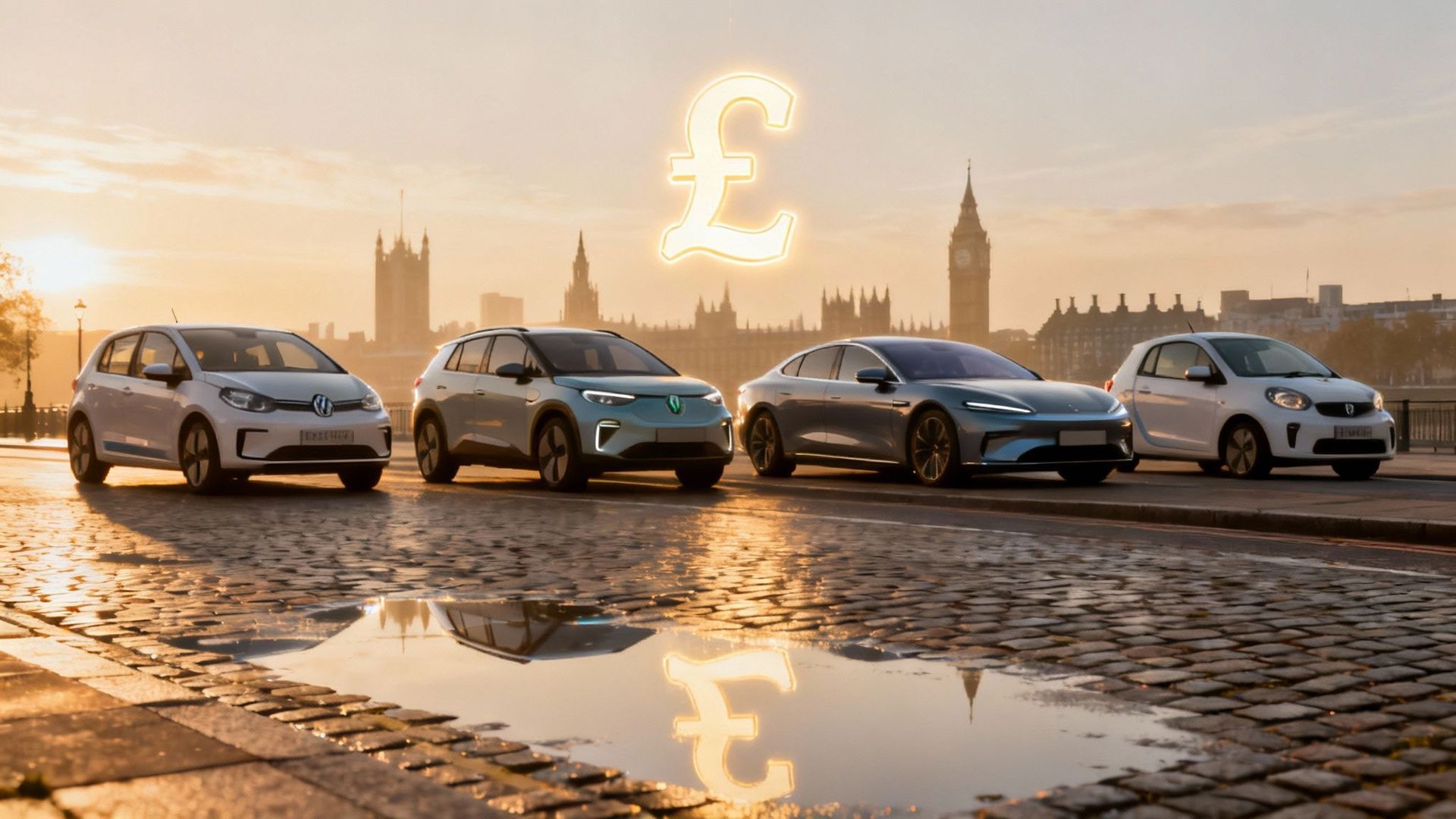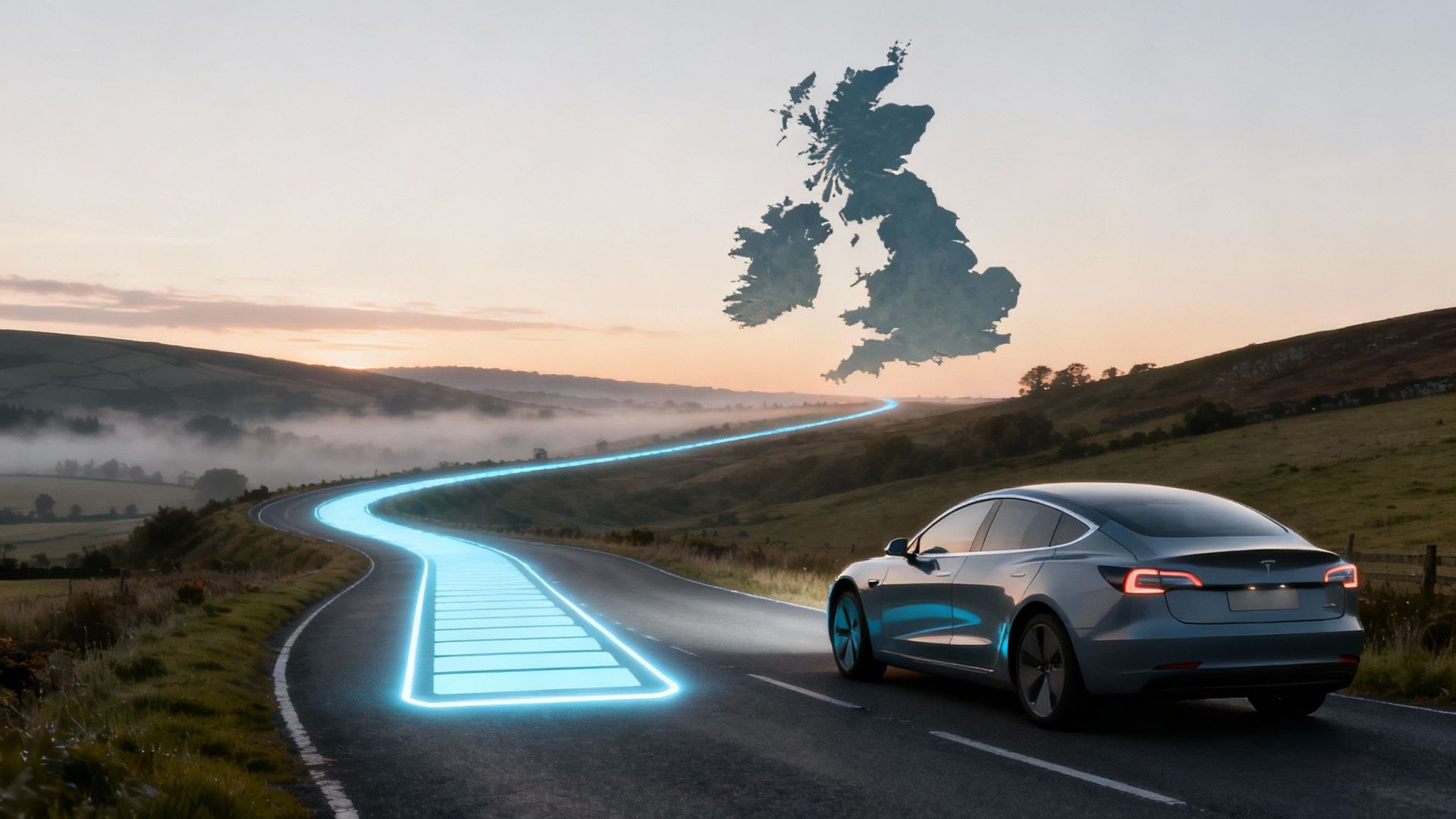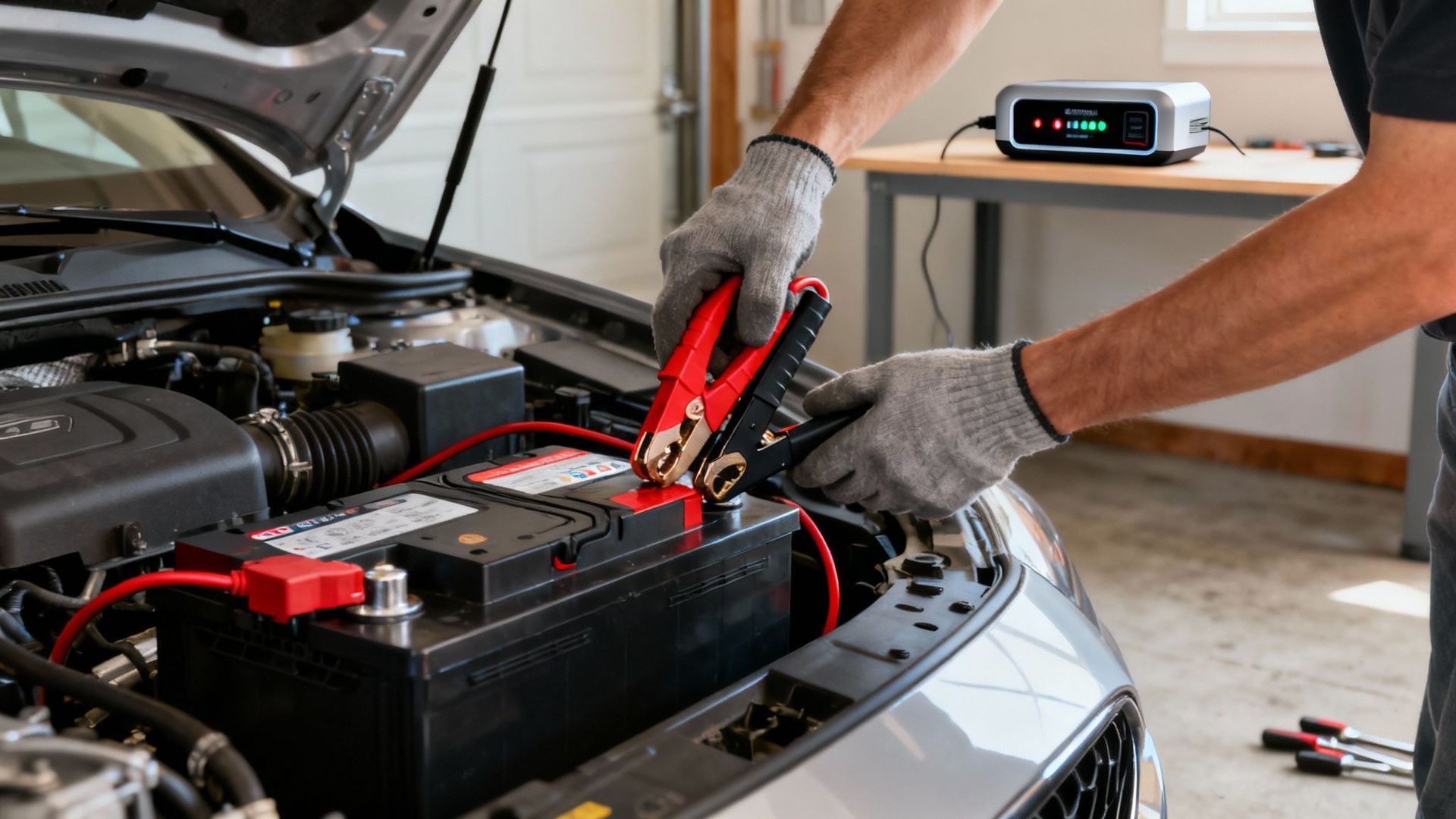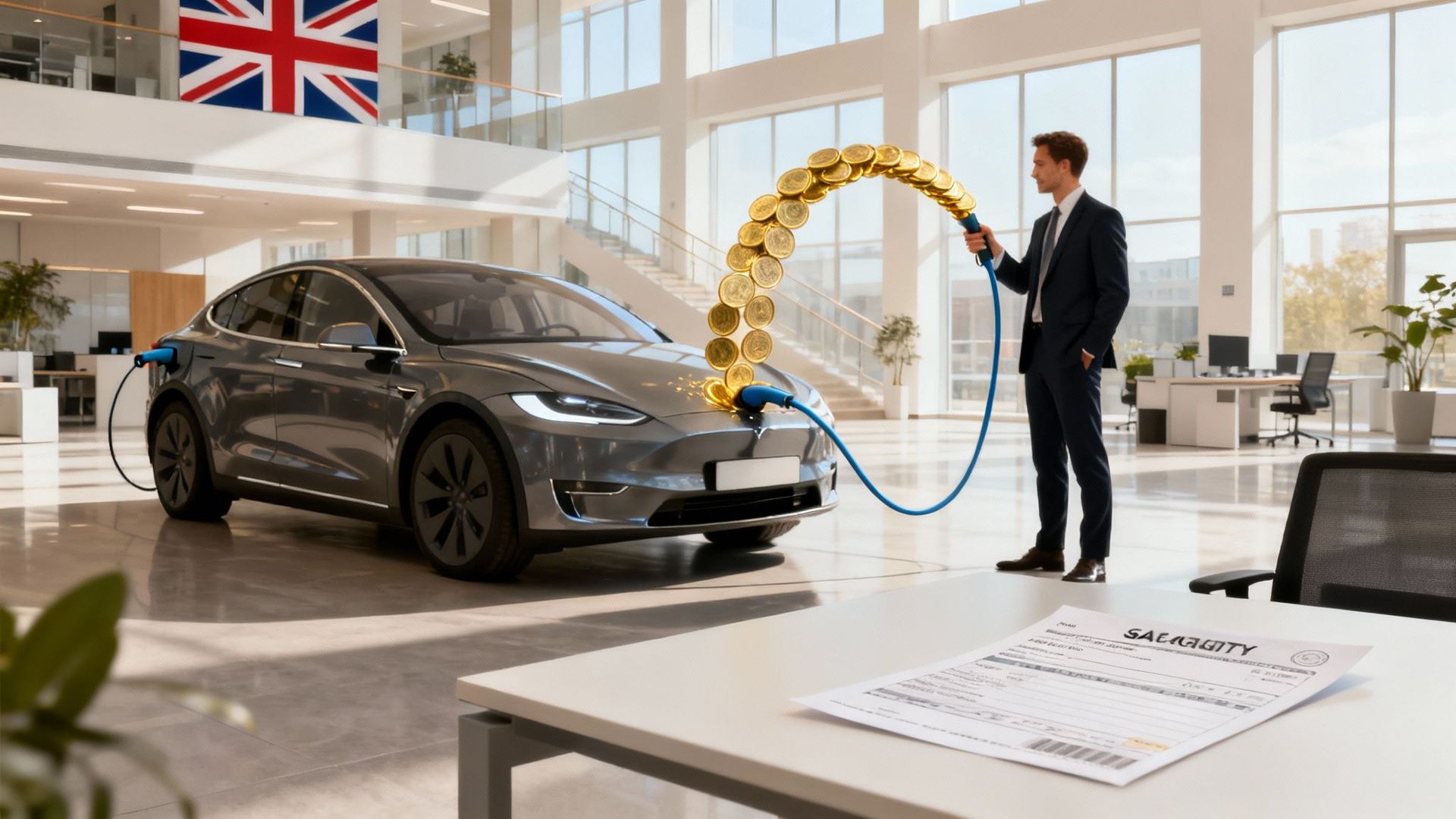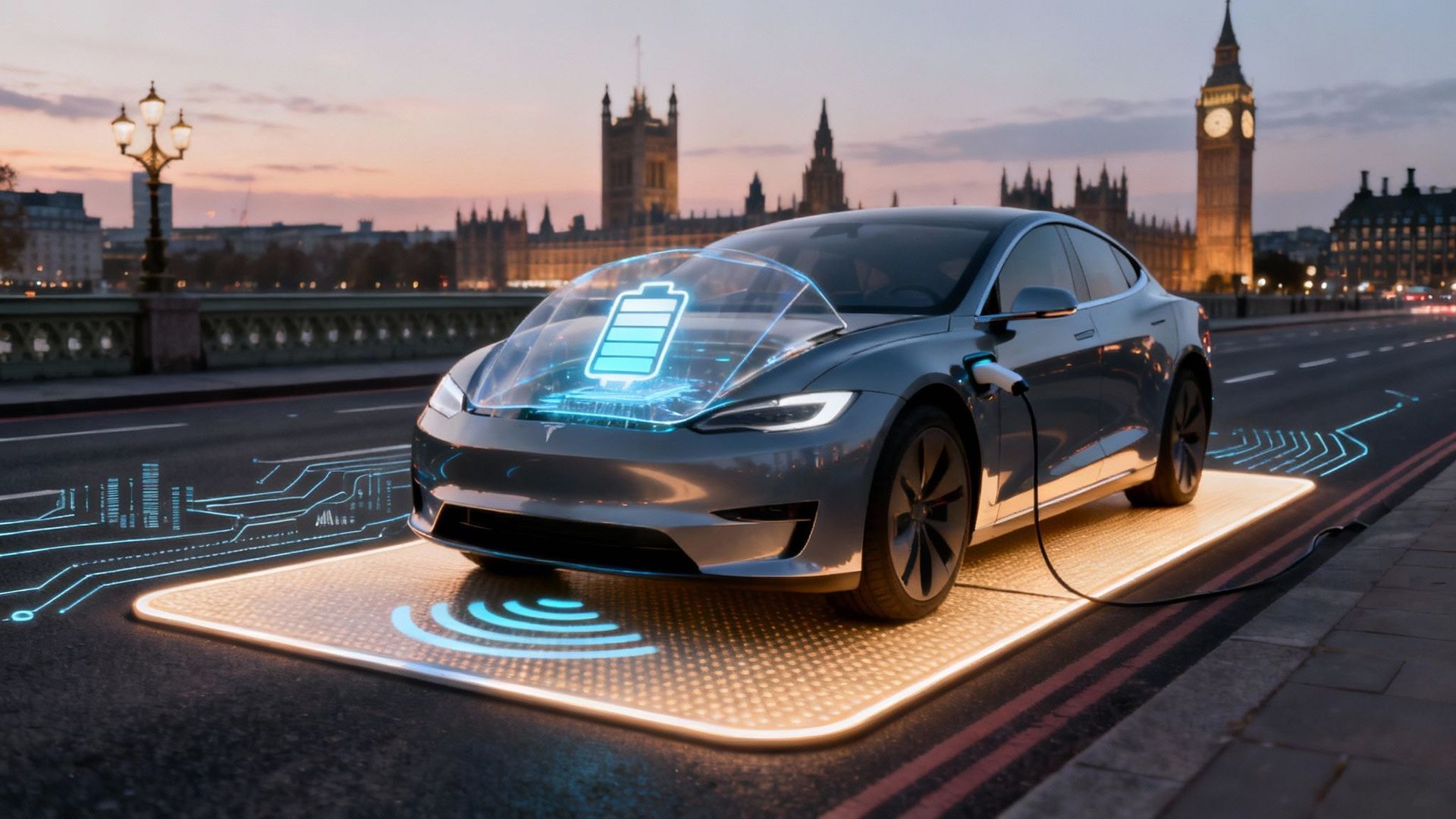Electric Car News UK: The Stories That Actually Matter This Week
Right then, grab a brew and settle in. The UK's electric car scene is moving faster than a Tesla on a German motorway, and frankly, it’s a full-time job just keeping up. One minute the government is moving goalposts like a panicked groundskeeper, the next, prices are dropping quicker than a politician's approval rating after an expenses scandal. It’s a madhouse of mandates, mega-factories, and motors that whisper instead of roar.
This isn't just a collection of headlines; it's a revolution on four wheels, happening right here on our drizzly isles. Forget what you think you know. This week’s roundup of electric car news UK is a proper look at the big stories shaping what you'll be driving tomorrow, from Whitehall policy shifts to wallet-friendly price wars and the tech that’ll soon make 'range anxiety' sound as daft as a chocolate teapot. We're cutting through the noise to give you the essential updates that actually matter.
From the government's ambitious ZEV mandate targets and a landmark 50,000 public chargers to the rapid expansion of Chinese brands on our shores, we're covering the critical developments. We’ll also dissect the latest price cuts, analyse upcoming company car tax changes, and even peek at battery breakthroughs promising to obliterate range concerns for good. Let's get cracking.
1. The ZEV Mandate: Whitehall's Electric Shock Therapy for Car Makers
Whitehall has decided the softly-softly approach to electric car adoption needed a bit of a jolt. The Zero Emission Vehicle (ZEV) mandate is the government's not-so-subtle way of forcing car manufacturers to sell more EVs, whether they’re ready or not. It replaces the previous, simpler 2030 ban on new petrol and diesel car sales with a system of escalating targets that has car bosses sweating into their morning cornflakes.
This legally binding framework dictates that a specific percentage of each manufacturer's new car sales in the UK must be zero-emission. For 2024, that figure is a relatively gentle 22%. However, the targets ramp up aggressively each year, demanding a much heavier EV sales mix as we approach the end of the decade. Manufacturers who fail to meet these quotas face fines hefty enough to make an oligarch weep, creating a powerful financial incentive to prioritise electric models.
How it Works in Practice
The mandate includes a few get-out-of-jail-free cards, or "flexibilities" as the civil servants call them. Manufacturers that flog more EVs than required can bank the surplus credits for a rainy day or sell them to rivals who are lagging behind. This has created a nifty new marketplace where EV-native brands like Tesla can basically print money by flogging their spare credits to the slowcoaches.
- Winners: All-electric brands such as Tesla, Polestar, and even legacy marques like Volvo that have gone all-in on electrification are sitting pretty, ready to cash in their excess credits.
- Challengers: Larger groups like Stellantis (owner of Vauxhall, Peugeot, and Citroën) have openly admitted they might need to get their chequebooks out to avoid fines, while manufacturers like Ford are scrambling to expand their EV line-ups to keep pace.
The following timeline illustrates the steep climb manufacturers face over the next decade.
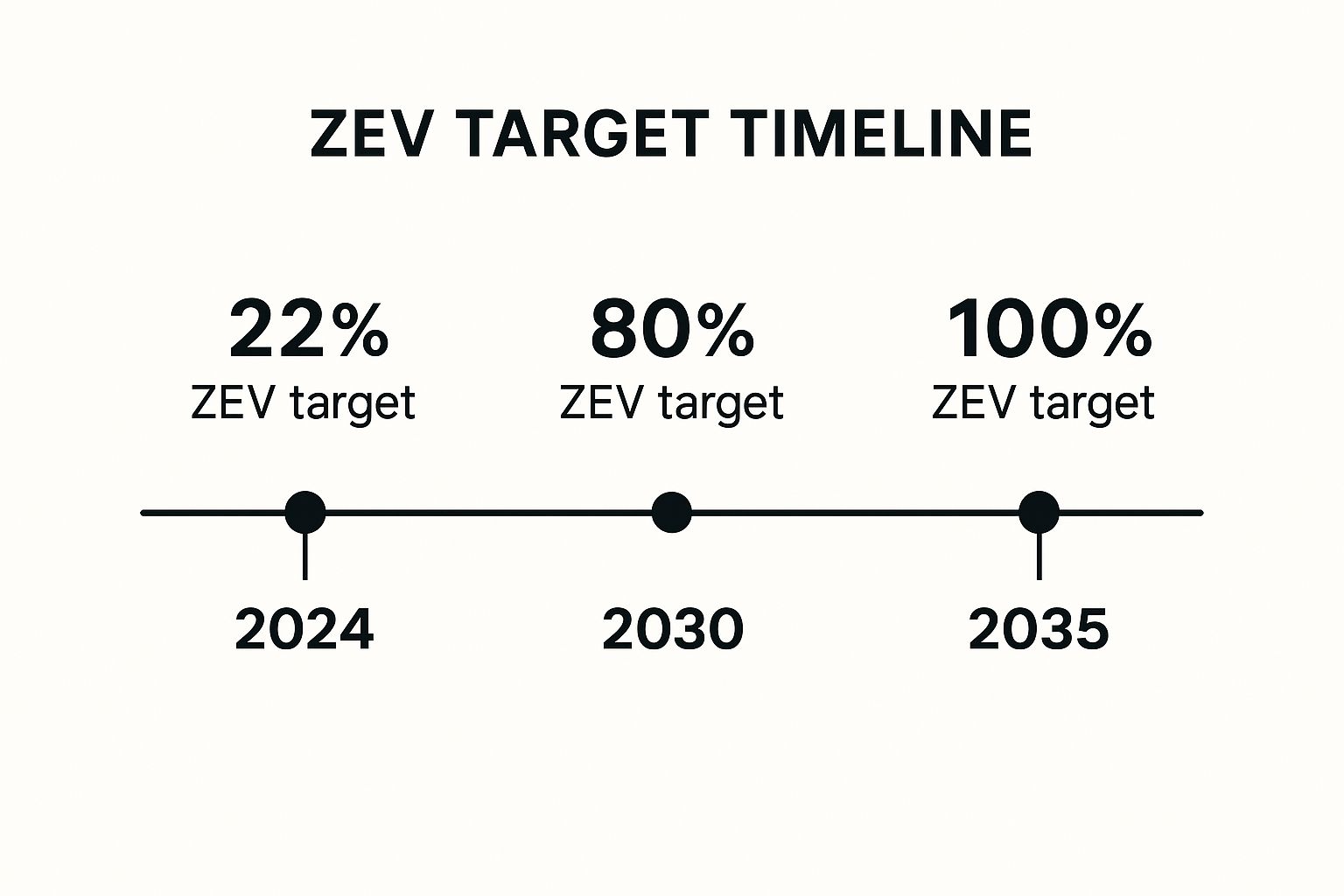
The infographic clearly shows the sharp acceleration in requirements, jumping from just over one-fifth of sales in 2024 to an ambitious four-fifths by 2030. This is a clear indicator of the role of government policies in accelerating EV adoption and shaping the UK automotive market with a bloody big stick.
2. The Great EV Price Crash: Discounts Galore Across the UK
The days of EVs being exclusively for the well-heeled are rapidly drawing to a close, thanks to a fierce price war that has erupted across the UK market. A perfect storm of increased competition, cheaper battery tech, and the looming threat of ZEV mandate fines has forced manufacturers to slash prices, making electric cars more accessible than ever. This isn't just a few quid off; we're seeing reductions of up to £10,000 on popular models.
This aggressive pricing strategy was kick-started by Tesla, which has repeatedly cut the cost of its best-selling Model 3 and Model Y, much to the chagrin of anyone who bought one last week. Chinese brands like MG and BYD have piled on the pressure, launching highly specified models at prices that seriously undercut established European rivals. This has triggered a domino effect, compelling legacy manufacturers to join the discount party or risk being left behind in the sales charts.

How it Works in Practice
The price cuts are not just marketing stunts; they represent a fundamental shift in the market. Manufacturers are leveraging economies of scale and passing on savings from reduced raw material costs, particularly for batteries. The pressure to hit their 22% ZEV mandate target for 2024 is also a huge motivator, as selling more EVs, even at a lower margin, is far preferable to paying eye-watering government fines.
- Winners: Budget-conscious buyers are the clear winners, gaining access to new EVs at prices competitive with petrol equivalents. Brands like MG and BYD are also capitalising on the situation, rapidly growing their UK market share.
- Challengers: Premium brands are finding it harder to justify their higher price points when a Tesla or BYD offers similar or better tech for less. Legacy automakers like Volkswagen are being forced into uncomfortable price adjustments to stay in the game.
The following examples highlight the scale of the recent price drops across the UK.
- Tesla Model 3: Multiple price cuts throughout 2024 have seen its cost fall by around £5,000, making it a direct competitor to executive saloons like the BMW 3 Series.
- MG4 EV: The starting price for this award-winning hatchback has been lowered to just £26,995, putting it in the same bracket as a petrol Ford Focus or VW Golf.
- BYD Dolphin: Entered the market with an aggressive launch price of £25,490, immediately challenging the established order in the small EV segment.
- Volkswagen ID.3: Has received discounts ranging from £3,000 to £5,000 as VW responds to the increased competition.
These reductions are a key piece of electric car news UK drivers have been waiting for, signalling that the era of the affordable, mainstream EV has finally arrived.
3. The Chinese Are Coming! (And They've Brought Cheap EVs)
The great automotive invasion is here, but instead of Panzers, it’s coming in the form of keenly priced, feature-packed electric cars from China. Brands like BYD, GWM Ora, and the revitalised MG (owned by SAIC) are no longer a distant threat; they are aggressively setting up showrooms and reshaping the UK automotive landscape. Their strategy is simple: offer more tech, comparable range, and modern design for significantly less money than their European counterparts. It’s a bit cheeky, and it’s working.
This expansion is being spearheaded by a mix of established players and ambitious newcomers. SAIC’s MG brand has already cracked the top 10 for UK car sales, with its MG4 EV becoming a common sight on British roads. Meanwhile, BYD (which stands for 'Build Your Dreams', in case you were wondering, which you probably weren't) has huge ambitions, targeting a 5% market share with competitively positioned models like the Seal, a direct rival to the Tesla Model 3.

How it Works in Practice
These manufacturers are leveraging their vast domestic market scale and leadership in battery technology to undercut established brands by as much as 20-30%. This isn't just about being cheap; they're bringing genuinely compelling products to market. The BYD Dolphin and Atto 3 target the crucial family market, while the GWM Ora 03 offers quirky styling and premium-level features at a mid-range price point.
- Winners: Cost-conscious UK buyers are the immediate beneficiaries, gaining access to brand-new EVs that were previously out of reach. The market itself benefits from increased competition, forcing legacy brands to rethink their pricing strategies.
- Challengers: Established European and Japanese manufacturers like Volkswagen, Ford, and Nissan are now facing intense pressure from below. They must either justify their premium pricing or risk losing significant market share to these disruptive new entrants in the ever-evolving world of electric car news UK .
When considering a Chinese EV, it's wise to do your homework. Test drives are essential, but also check the small print on battery warranties and confirm the location of your nearest service centre. Verifying the brand's long-term investment and commitment to the UK market can also provide peace of mind for a major purchase.
4. UK Hits 50,000 Public Chargers, But Good Luck Finding One That Works
The UK's public EV charging network has officially ticked past the 50,000 charge point milestone, a significant number that sounds impressive until you remember the government's target is over 300,000 by 2030. While this growth is a positive piece of electric car news in the UK, the celebration is tempered by a familiar problem: finding one in the middle of nowhere is still a nightmare, and finding one that isn't broken is a cause for a national holiday.
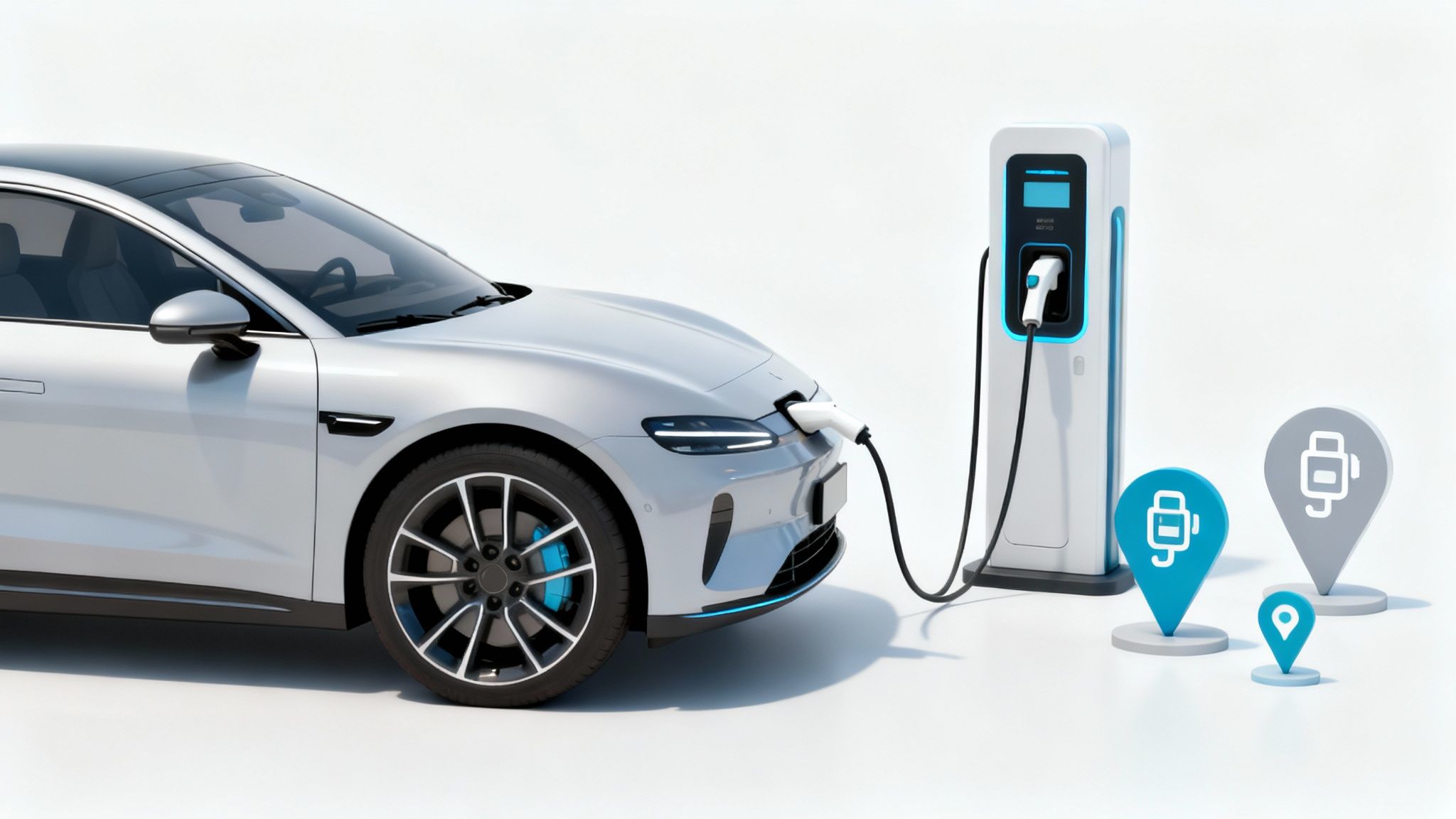
While London and the Southeast are practically drowning in charge points, vast swathes of rural Britain are left wondering if they're expected to power their cars with wishful thinking. The network now includes a growing number of ultra-rapid chargers capable of adding over 100 miles of range in less time than it takes to queue for a grim service station coffee. However, persistent grumbles about reliability, confusing pricing structures, and out-of-service units mean that hitting a big number is only half the battle.
How it Works in Practice
The expansion is being driven by a mix of private investment and targeted public funding, creating a patchwork of different networks with varying speeds, costs, and reliability. This competitive landscape means drivers often need a wallet full of apps and membership cards just to navigate the country without range anxiety kicking in.
- High-Power Hubs: Companies like Gridserve are replacing traditional petrol forecourts with their "Electric Highway" hubs, offering dozens of high-speed chargers. Similarly, Ionity focuses on ultra-rapid charging along major motorway routes, for a price.
- Retail & On-Street: BP Pulse and Shell Recharge are aggressively installing rapid chargers at their existing retail sites, while local authorities are getting creative. Westminster City Council, for example, has been converting lamp posts into slow chargers for residents without driveways.
- Opening Up: In a significant move, Tesla has begun opening its famously reliable Supercharger network to non-Tesla vehicles, adding thousands of high-quality charging options for all EV drivers and showing everyone else how it should be done.
The reality is a network that is simultaneously growing at a record pace yet still struggling to provide the seamless, reliable experience that will convince the last of the petrolheads to make the switch.
5. Company Car Tax: The One Good Reason to Go Electric in 2024
For company car drivers, the current tax regime makes choosing an electric vehicle less of a decision and more of a total no-brainer. The UK's Benefit-in-Kind (BiK) tax structure has been engineered to make EVs so irresistibly attractive that you'd have to be mad, or an accountant for an oil company, to pick a petrol car. This is one of the most significant pieces of electric car news in the UK for fleet drivers and businesses.
This tax magic is primarily down to the BiK rate for zero-emission vehicles, which sits at a rock-bottom 2% through to April 2025. When you compare this to a petrol or diesel equivalent that could attract rates well over 30%, the annual savings for an employee can easily run into thousands of pounds. However, change is on the horizon: from April 2025, EVs will no longer be exempt from Vehicle Excise Duty (VED), or road tax, bringing them back into the clutches of the Treasury.
How it Works in Practice
The low BiK rate is the headline act, but the savings are amplified through salary sacrifice schemes. These allow employees to lease a brand-new EV using their pre-tax salary, reducing their income tax and National Insurance contributions while gaining access to a new car. It's a win-win that has been aggressively promoted by providers like Octopus Electric Vehicles.
- Winners: Company car drivers can save a fortune. For example, a higher-rate taxpayer choosing a Tesla Model 3 over a comparable BMW 3 Series could easily save over £5,000 in tax annually. That's a very nice holiday.
- Challengers: Anyone sticking with a petrol or diesel company car will continue to face significantly higher tax bills, making them financially unappealing by comparison. Businesses not offering EV salary sacrifice schemes may find themselves at a disadvantage when recruiting talent.
The impending VED changes mean the window for maximum tax efficiency is now. While the BiK benefits remain strong, the end of the VED exemption marks a subtle but important shift in government policy. This is why understanding the full scope of UK electric car tax benefits is crucial for anyone looking to make the switch in the near future.
6. Battery Breakthroughs Promise an End to Range Anxiety (Eventually)
Range anxiety, the EV driver’s persistent boogeyman, might soon be banished for good. Significant breakthroughs in battery technology, emerging from global manufacturers and UK research hubs, are promising electric cars with a bladder-busting 500-plus mile range. The days of meticulously planning every long journey around rapid charger locations could be numbered, which is good news for everyone.
This leap forward isn't down to one single discovery, but a raft of innovations hitting the mainstream. Solid-state batteries, which replace the liquid electrolyte with a solid material, are a major contender, promising greater energy density, faster charging, and improved safety (i.e., less likely to spontaneously combust). At the same time, advancements in silicon anode and lithium-iron-phosphate (LFP) technologies are squeezing more miles out of existing formats, often at a lower cost.
How it Works in Practice
These next-generation batteries will fundamentally change the EV ownership proposition. Instead of a 300-mile car being considered 'long-range', it will likely become the entry-level standard, with premium models easily exceeding the 500-mile mark. This reduces the need for daily charging for many and makes cross-country trips a far simpler affair.
- Key Players: Toyota has famously committed to launching EVs with solid-state batteries by 2026-2027, after about a decade of promising them. Meanwhile, battery giants like CATL and BYD (with its Blade Battery) are pushing the boundaries of LFP and other chemistries, as are UK-based efforts from the Faraday Institution, which coordinates world-class battery research across British universities.
- Actionable Tips: If a 500-mile range is a must-have for you, it may be worth waiting a couple of years before your next purchase. However, remember that today's 300-mile EVs are more than sufficient for over 95% of journeys. Focus on real-world charging availability over chasing the highest possible range figure on a spec sheet.
The pace of development is rapid, making it crucial to stay informed about exploring the latest innovations in electric vehicle battery technology. This ongoing evolution will not only tackle range concerns but also has the potential to make EVs more affordable and durable.
7. Turn Your Car into a Cash Machine: V2G Trials Hit the UK
It turns out your electric car might be more than just a way to get to the shops; it could soon be a mini power station on wheels. Vehicle-to-Grid (V2G) technology, the clever concept that allows EVs to sell electricity back to the grid, is finally moving out of the lab and into real-world trials across the UK. The idea is simple: charge up when electricity is cheap and plentiful (i.e., the middle of the night), then sell it back during peak hours when the grid is groaning under the strain of everyone making a cup of tea at once.
This bidirectional charging system transforms your car from a simple energy consumer into an active grid participant. Energy suppliers are keen, as it helps balance demand and reduces the need for firing up expensive, dirty power stations. For EV owners, the carrot is the potential to earn between £300 and £800 a year, effectively making their car pay for its own electricity. It’s a key piece of electric car news UK drivers should watch closely.
How it Works in Practice
Pioneering energy firms and network operators are leading the charge with large-scale trials. These projects are crucial for ironing out the kinks before a nationwide rollout. The goal is to see how a fleet of EVs can collectively support the grid without inconveniencing their owners by draining their battery just before the school run.
- Pioneers: Octopus Energy's 'Powerloop' trial and OVO Energy’s V2G tariff (partnered with Nissan) have demonstrated the financial benefits for households. Meanwhile, UK Power Networks' 'Project Leo' in Oxford is testing V2G's role in a wider smart local energy system.
- Participants: While early trials focused heavily on the Nissan Leaf, compatibility is expanding. Ford has made its F-150 Lightning and Mustang Mach-E V2G-capable in the US, with UK implementation expected to follow as the technology matures.
Before you rush to turn your car into a cash machine, remember to check your vehicle's compatibility and understand any potential impact on your battery warranty. It's a promising technology, but it pays to read the small print.
8. UK Car Industry's Mad Dash to Go Electric
The UK's car manufacturing scene, a cornerstone of British industry, is in the midst of a monumental, and frankly overdue, pivot towards electrification. Billions of pounds are being pumped into retooling factories and building new battery plants, a high-stakes gamble to secure the sector's future. This isn't just about changing what cars roll off the production line; it's a fundamental rewiring of the entire automotive ecosystem.
The transition is being powered by huge investments from global players. Nissan has committed a further £2 billion to its Sunderland hub, creating a massive EV manufacturing ecosystem. Not to be outdone, Jaguar Land Rover has announced a colossal £15 billion electrification plan, while Stellantis is safeguarding van production by converting its Ellesmere Port and Luton plants to build electric models. This flurry of activity is a direct response to the EV revolution and a desperate attempt to stay competitive.
How it Works in Practice
These grand announcements translate into tangible projects on the ground. The goal is to create localised supply chains, reducing reliance on imported batteries and components while future-proofing UK manufacturing jobs. However, the path isn't entirely smooth; the high-profile failure of Britishvolt served as a stark warning of the challenges involved in building a battery industry from scratch. It’s not all sunshine and gigafactories.
- Winners: Regions with established automotive heritage are seeing a renaissance. Sunderland is benefiting from the Nissan EV36Zero project, which integrates EV production with a new Envision AESC battery gigafactory. Merseyside and Oxfordshire are also seeing investment boosts from JLR and BMW's MINI brand respectively.
- Challengers: The entire UK industry faces stiff competition from heavily subsidised factories in the EU and the US. Industry bodies like the SMMT are constantly lobbying for a more robust government industrial strategy to ensure the UK remains an attractive place to build cars, protecting the more than 800,000 jobs the sector supports.
UK Electric Car News: Key Developments Comparison
| Aspect 🔄 / Item ⭐ | UK Government 2030 ZEV Mandate | UK EV Market Price Reductions | Chinese EV Manufacturers UK Expansion | UK Public Charging Infrastructure | EV Tax Benefits & Company Car Changes | Battery Technology Breakthroughs | Vehicle-to-Grid (V2G) Technology Trials | UK Automotive Industry EV Transition & Investment |
|---|---|---|---|---|---|---|---|---|
| Implementation Complexity 🔄 | Medium - regulatory framework with compliance schemes | Low - market-driven pricing changes | Medium - expanding dealer/service networks | High - infrastructure build with geographic challenges | Low-Medium - tax regulations with scheduled changes | High - tech development, scale-up pending | High - requires bidirectional tech and compatible EVs | High - large scale manufacturing & supply chain setup |
| Resource Requirements ⚡ | High - manufacturer adaptation, compliance monitoring | Medium - manufacturing cost efficiencies & competition | High - supply chain, dealer network, service footprint | Very High - charging points, technology, grid upgrades | Low - mostly administrative & fiscal policy resources | High - R&D investment, advanced materials, production | Medium-High - special chargers, smart grid integration | Very High - capital investment, skilled workforce |
| Expected Outcomes 📊 | Accelerated EV adoption, emissions reduction | Increased affordability, wider consumer EV adoption | Greater market choice, price competition, tech adoption | Expanded charging network, better EV usability | Significant tax savings, encourage company EV use | Extended EV range, better performance | Grid stability, user income, energy system integration | Secured jobs, domestic EV production, economic growth |
| Ideal Use Cases 💡 | Automotive industry targets, policy enforcement | Consumers seeking affordable EVs | Buyers prioritizing tech/features at lower price | EV drivers needing accessible public charging | Company car drivers & businesses optimizing tax savings | Early adopters needing long-range EVs | EV owners with compatible cars, energy-savvy users | Investors, manufacturers, workforce in EV production |
| Key Advantages ⭐ | Clear roadmap, flexibility via credit trading | More competitive pricing, better deals | Advanced tech at lower prices, strong warranties | Large network, rapid chargers, increasing competition | Low BiK rates, capital allowances, salary sacrifice | Long-range, faster charging, better battery life | Earnings from grid feed-in, grid support, smarter costs | Job security, UK industrial growth, EV supply chain |
So, What's the Current State of Play?
Well, there you have it. The UK's electric vehicle landscape is less a serene, green pasture and more a frantic, high-stakes game of automotive whack-a-mole. One minute you're celebrating the government's ZEV mandate for finally giving the industry a firm shove, the next you're watching established brands scramble as Chinese manufacturers lob attractively priced, tech-laden models over the fence. This week's electric car news UK paints a picture of organised chaos, and frankly, we're here for it.
The overarching narrative is one of relentless forward motion, even if the wheels occasionally wobble. We've seen significant price drops making EVs a more realistic proposition for the average punter, not just the early-adopting tech evangelist. The public charging network has finally cracked the 50,000-point milestone, a number that sounds impressive until you find all three chargers at the Toddington services are on the fritz. It's a classic case of progress with an asterisk.
Key Takeaways from This Week's Mayhem
Let's boil down this week’s eclectic mix of headlines into actionable intelligence. What does this all actually mean for you, the person who just wants to get from A to B without setting fire to your wallet or the planet?
- Your Wallet is a Battleground: The price war is real. With aggressive new entrants and legacy automakers adjusting their strategies, the pressure on pricing is immense. If you're in the market, your patience could be rewarded. Don't just accept the list price; the market is too volatile for that.
- Company Cars are Still the Golden Ticket: The current Benefit-in-Kind (BiK) tax rates remain the single most compelling financial reason to go electric if you're a company car driver. This advantage won't last forever, but for the 2024-2025 tax year, it's an absolute no-brainer.
- The Future is Closer (and Further) Than You Think: Breakthroughs in battery tech promising 500-mile ranges and the expansion of Vehicle-to-Grid (V2G) trials are genuinely exciting. They point to a future where range anxiety is a quaint relic and your car could power your kettle. However, these are not showroom realities for most people just yet. Manage your expectations.
The UK's electric transition isn't just coming; it's here, and it's complicated, messy, and fascinating. Keeping informed is no longer a niche hobby for car geeks; it's an essential skill for anyone who drives a car or pays taxes. The tectonic plates of the automotive world are shifting right beneath our feet, driven by policy, innovation, and fierce global competition. Understanding these dynamics is the key to making smarter decisions, whether you're buying, selling, or just trying to make sense of the noise. The age of casually ignoring the electric car news UK is well and truly over.
Navigating the whirlwind of EV updates, from policy shifts to new model launches, can feel like a full-time job. Let VoltsMonster do the heavy lifting for you. We cut through the jargon and deliver the essential insights you need, all in one place. Stay ahead of the curve by visiting VoltsMonster for the latest reviews and analysis.

